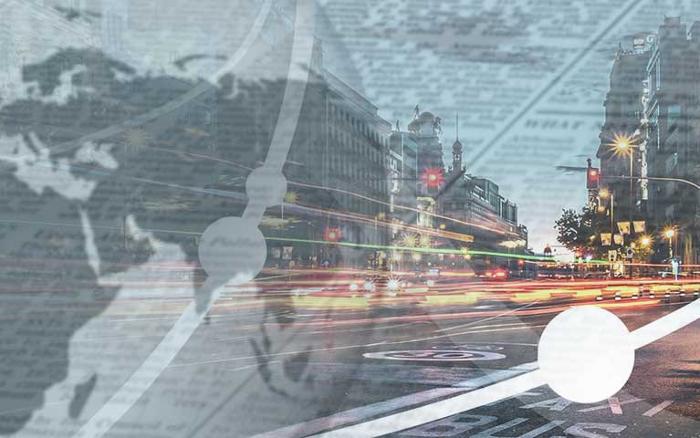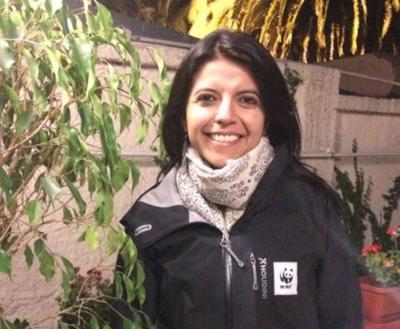

Interview with Paula Alexandra, Sustainable Cities Specialist at WWF Colombia
We have to look for specific solutions for each location and for each city, actions must be taken in an articulated and concerted manner among all actors.
- From your perspective, how important is mobility as part of the configuration for sustainable cities and environments and sustainable development in general?
A city’s mobility is like the blood circulation system in the human body. Without mobility, there can be no viable cities, and when circulation goes wrong, everything is thrown into chaos. The city loses its habitability and charm and puts its economy at risk. A city’s reason for existing is to exchange goods and products, food, and most importantly, ideas and knowledge. During the pandemic, we discovered how to share ideas and knowledge without moving about, by doing it online. I think we’d all agree that there’s no substitute for physical, face-to-face interaction, seeing the other person’s face and intuiting what he or she is thinking about what we’re saying, feeling the other person’s energy. We had many more meetings than usual during the pandemic, but of lower quality. With the camera off, we can’t see the other person’s facial expression, and sometimes we can’t know whether they’re listening or reading their email. Not all meetings are necessary, and during the pandemic, we also learned that interaction couldn’t be entirely virtual. But cities must, by definition, be dynamic. So we need to be mobile but sustainably and inclusively.
The average number of daily journeys is one of the indicators of quality of life for a city, and we can’t make several journeys a day if mobility isn’t sustainable. If we spend two hours a day getting from home to work and back, we’ll hardly want to do anything else once we get home. Sustainable cities have mixed land use to make it easier to work, live closer to work and find everything we need to enjoy ourselves, do the shopping and share ideas with others, all close to home. To achieve this, places need to be close to each other so that people can switch to low-emissions transport like cycling or walking, move around more easily and meet to do business, share ideas and be together.
- What are the main themes for WWF’s work, specifically around sustainable mobility?
The WWF network works on mobility issues and reducing Greenhouse Gas (GHG) emissions to help cities keep to the global pathway to preventing average temperatures from increasing by 1.5 degrees because of the devastating effects this would have on our planet. We’re working on projects and initiatives to promote electric mobility, active mobility and behavioural changes when people choose how to commute each day.
- What are the main obstacles WWF sees ahead for the development of sustainable mobility?
Dependence on fossil fuels for transport and in countries’ economies, and the lack of sustainable options in some cities. Also, towns cut themselves off from their surrounding rural areas, often leading them to adopt policies that threaten the conservation of ecosystems that are strategically important for the cities themselves and their inhabitants. Some other obstacles are the lack of knowledge about the impact of individual decisions and the lack of regulation about charging systems for electric vehicles in some countries.
- How do you think the development of this ecosystem should be coordinated when governments, institutions, companies from different sectors, technological development and regulations also have an influence?
We need to look for solutions suitable for each place and city. We need to take action in a way that coordinates and focuses the efforts of all these stakeholders to find solutions because a solution that’s worked perfectly in one place may not work in another city of similar size. We all have different customs, climates, natural environments, and industries. If each sector makes decisions in isolation, it risks spending wastefully. Although they may seem appropriate from a conceptual and theoretical design point of view, people may make other decisions. They need to consult people while working on the design.
- How is this effort being coordinated in Latin America, and Colombia in particular?
Some cities have specific initiatives, but we need more coordination between national and local governments. Some national regulations are unsuitable for all towns and cities because it’s a very diverse country. So sometimes, the local government of each municipality finds solutions that can’t be implemented because they go against national regulations.
- What opportunities do you think Global Mobility Call offers to progress towards these objectives? In particular, what opportunities does this congress in Madrid represent for WWF?
GMC is an opportunity to connect with people from other contexts and analyse other perspectives and points of view. When urban planners, mobility experts, private companies and people from different contexts and nationalities gather together in the same space, it’s undoubtedly an excellent opportunity to learn about other perspectives and encourage creativity and alliances to promote the necessary solutions for each place. The increasingly important environmental issue is certainly something to discuss with other experts in this space. Also, overcoming the language barrier will help bring people together and share experiences more. Although the congress will be in English, it’s always a help to speak the language of the place where an event is held.





